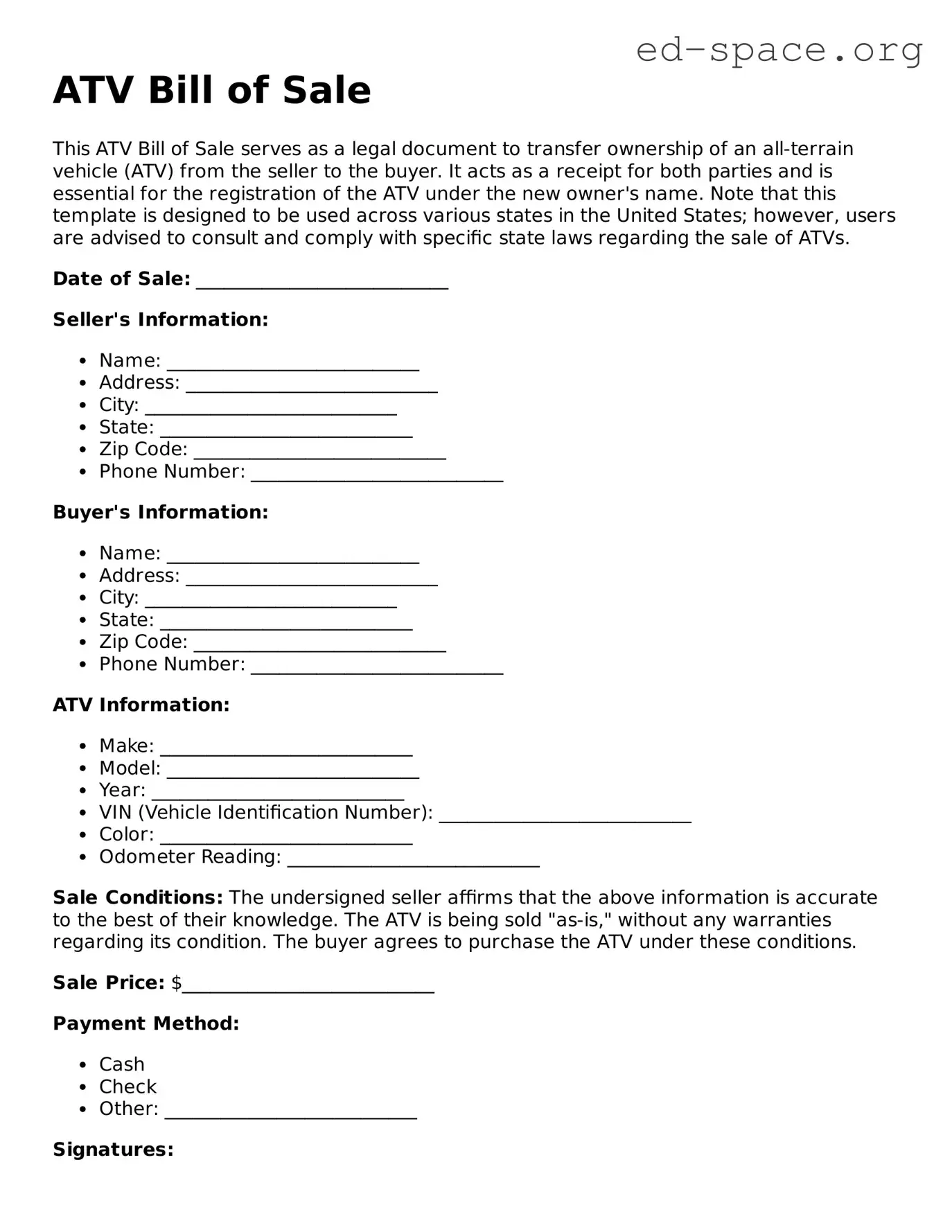What is an ATV Bill of Sale form?
An ATV Bill of Sale form is a legal document that records the sale of an All-Terrain Vehicle (ATV) from a seller to a buyer. It acts as proof of purchase and documents the terms of the sale, including details about the buyer, seller, ATV, and the sale price.
Why do I need an ATV Bill of Sale?
It's important for both the protection of the buyer and seller. For the buyer, it serves as evidence of ownership and can be used for registration and titling of the ATV. For the seller, it provides proof that the legal ownership of the ATV has been transferred to the buyer, which can be important for liability reasons.
What information should be included in an ATV Bill of Sale?
A comprehensive ATV Bill of Sale should include the full names and addresses of both the seller and buyer, a description of the ATV (including make, model, year, VIN), the sale price, payment details, and the date of sale. It might also include any warranties or agreements regarding the condition of the ATV.
Do I need to notarize my ATV Bill of Sale?
While not all states require notarization of a Bill of Sale, it is highly recommended to notarize the document. Notarization adds a layer of legal authentication, which can be helpful in protecting against disputes over the sale or the authenticity of the signatures.
Can I write my own ATV Bill of Sale?
Yes, you can create your own ATV Bill of Sale. Ensure that all the necessary details are included in the document to make it legally binding. However, utilizing a template or consulting with a legal expert can ensure that the Bill of Sale complies with state laws and includes all essential information.
How does an ATV Bill of Sale benefit the buyer?
For the buyer, the ATV Bill of Sale is proof of ownership, which is necessary for registration and titling of the ATV in their name. It also assures the buyer that the ATV is free from undisclosed liens or encumbrances at the time of sale.
Is an ATV Bill of Sale the same in every state?
No, the requirements for an ATV Bill of Sale can vary from state to state. Some states may have specific forms or additional information that must be included. It’s important to check with your local Department of Motor Vehicles (DMV) or equivalent agency to ensure compliance with state laws.
What happens if I lose my ATV Bill of Sale?
If the ATV Bill of Sale is lost, it is advisable to contact the seller for a duplicate. If possible, drafting a new document that both parties can sign again might be necessary. Keeping a digital copy of the Bill of Sale can prevent this issue in the future.
